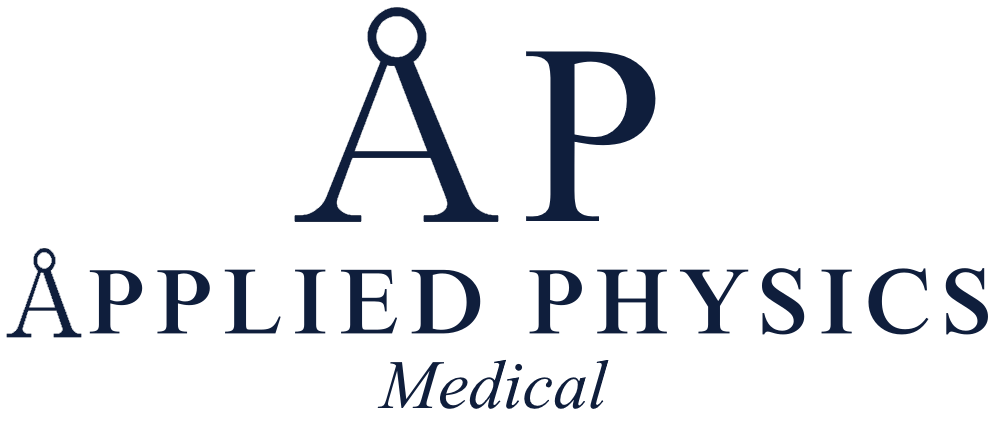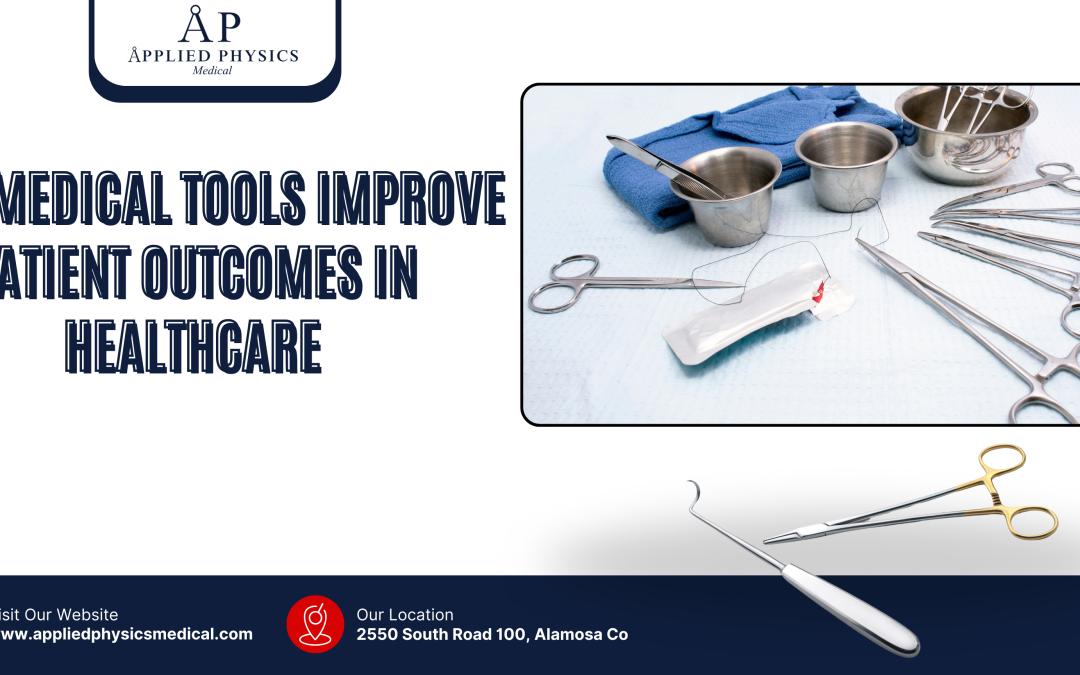Introduction
Medical tools have revolutionized the way healthcare professionals diagnose and treat patients. Advanced imaging techniques such as MRI, CT scans, and ultrasound have allowed for more accurate and timely diagnosis of various medical conditions. These tools provide detailed images of the body’s internal structures, allowing doctors to identify abnormalities and make informed decisions about treatment options.
In addition, advancements in laboratory testing equipment have enabled healthcare providers to quickly and accurately analyze blood, urine, and tissue samples, leading to more precise diagnoses and personalized treatment plans for patients. With the help of these medical tools, healthcare professionals are able to detect diseases at earlier stages, leading to better outcomes for patients. Furthermore, medical tools have also played a crucial role in improving treatment options for patients.
For example, surgical tools such as laparoscopic instruments and robotic-assisted devices have made minimally invasive procedures more accessible. These tools allow surgeons to perform complex surgeries with smaller incisions, resulting in less pain, reduced risk of infection, and faster recovery times for patients. Additionally, advancements in medical devices such as pacemakers, insulin pumps, and prosthetic limbs have significantly improved the quality of life for patients with chronic conditions.
Overall, the use of medical tools has greatly enhanced the ability of healthcare professionals to diagnose and treat patients, leading to improved patient outcomes.
Key Takeaways
- Medical tools improve patient outcomes by enhancing diagnosis and treatment, enabling minimally invasive procedures, and facilitating precision medicine.
- They also contribute to improved patient safety, faster recovery times, and remote monitoring and telemedicine.
- These tools allow for personalized care and increased patient satisfaction.
- Enhanced diagnosis and treatment lead to more accurate and timely interventions, resulting in better patient outcomes.
- Minimally invasive procedures and precision medicine help reduce the risk of complications and improve recovery times for patients.
Minimally Invasive Procedures
The development of medical tools has led to a significant shift towards minimally invasive procedures in healthcare. These procedures involve using advanced tools and techniques to perform surgeries and other medical interventions with smaller incisions and less disruption to the body’s tissues. As a result, patients experience less pain, reduced scarring, and faster recovery times compared to traditional open surgeries.
One example of a minimally invasive procedure is laparoscopic surgery, which uses small incisions and a camera to perform operations on the abdomen or pelvis. This approach has become the standard of care for many surgical procedures, including gallbladder removal, hernia repair, and hysterectomy. In addition to surgical procedures, medical tools have also enabled minimally invasive treatments for various medical conditions.
For example, interventional radiology procedures use imaging guidance and specialized tools to perform minimally invasive treatments for conditions such as blocked blood vessels, tumors, and chronic pain. These procedures often result in shorter hospital stays, quicker recovery times, and reduced risk of complications for patients. Overall, the shift towards minimally invasive procedures has been made possible by the development of advanced medical tools, leading to improved patient outcomes and a higher quality of care in healthcare.
Precision Medicine
Medical tools have played a crucial role in the advancement of precision medicine, which aims to tailor medical treatment and prevention strategies to individual patients based on their genetic makeup, lifestyle, and environmental factors. Advanced genetic testing tools have allowed healthcare professionals to identify specific genetic mutations and variations that may influence a patient’s risk of developing certain diseases or their response to certain medications. This information can then be used to personalize treatment plans and medication regimens for patients, leading to more effective and targeted therapies.
Furthermore, medical tools such as biomarker tests and molecular diagnostics have enabled healthcare providers to identify specific characteristics of a patient’s disease at the molecular level. This information can help guide treatment decisions and predict a patient’s response to certain therapies, leading to more precise and effective treatment options. Overall, the use of medical tools in precision medicine has the potential to improve patient outcomes by providing personalized and targeted treatments that are tailored to each individual’s unique genetic makeup and disease characteristics.
Improved Patient Safety
| Medical Tool | Improvement in Patient Outcomes |
|---|---|
| Diagnostic Imaging | Early detection and accurate diagnosis of diseases |
| Surgical Instruments | Precision and minimally invasive procedures lead to faster recovery |
| Monitoring Devices | Continuous tracking of vital signs for timely intervention |
| Drug Delivery Systems | Precise administration of medication for effective treatment |
| Prosthetics and Orthotics | Improved mobility and quality of life for patients |
Medical tools have significantly improved patient safety in healthcare by reducing the risk of medical errors and adverse events. For example, electronic health records (EHRs) and computerized physician order entry (CPOE) systems have streamlined communication between healthcare providers and reduced the likelihood of medication errors and other mistakes. These tools allow for real-time access to patient information, medication histories, and treatment plans, helping to ensure that patients receive the right care at the right time.
Additionally, advancements in medical devices such as infusion pumps, ventilators, and patient monitoring systems have enhanced patient safety by providing accurate and reliable support for patients in critical care settings. These tools help healthcare providers monitor vital signs, administer medications, and deliver life-saving treatments with precision and efficiency. Furthermore, the use of barcode scanning technology has improved medication administration processes by ensuring that patients receive the correct medications at the correct doses.
Overall, the use of medical tools has greatly contributed to improved patient safety in healthcare, leading to better outcomes for patients and a higher standard of care.
Faster Recovery Times
Medical tools have played a crucial role in reducing recovery times for patients undergoing medical treatments and procedures. For example, advancements in surgical instruments and techniques have allowed for minimally invasive surgeries with smaller incisions and less tissue damage. As a result, patients experience less pain, reduced scarring, and faster recovery times compared to traditional open surgeries.
Additionally, medical devices such as compression stockings, pneumatic compression devices, and mobility aids have helped patients recover more quickly from surgeries by promoting circulation, preventing blood clots, and supporting mobility. Furthermore, advancements in rehabilitation equipment such as physical therapy tools and assistive devices have helped patients regain strength, mobility, and function after injuries or surgeries. These tools provide targeted exercises and support for patients during their recovery process, leading to improved outcomes and a faster return to normal activities.
Overall, the use of medical tools has significantly reduced recovery times for patients undergoing medical treatments and procedures, leading to improved patient outcomes and a higher quality of care in healthcare.
Remote Monitoring and Telemedicine
Medical tools have enabled remote monitoring and telemedicine services that allow healthcare providers to monitor patients’ health status and deliver care from a distance. For example, wearable devices such as smartwatches and fitness trackers can track vital signs, physical activity, and sleep patterns, providing valuable data for healthcare providers to monitor patients with chronic conditions or those recovering from surgeries. Additionally, remote monitoring systems for patients with chronic diseases such as diabetes or heart failure can alert healthcare providers to changes in a patient’s condition that may require intervention.
Furthermore, telemedicine platforms enable healthcare providers to conduct virtual consultations with patients, deliver remote care services, and provide medical advice through video conferencing and other communication technologies. These services have become especially valuable during the COVID-19 pandemic, allowing patients to access care from the safety of their homes while reducing the risk of exposure to infectious diseases. Overall, the use of medical tools for remote monitoring and telemedicine has expanded access to care for patients while improving patient outcomes through timely interventions and ongoing support from healthcare providers.
Personalized Care and Patient Satisfaction
Medical tools have facilitated personalized care approaches that focus on meeting each patient’s unique needs and preferences. For example, advancements in electronic health records (EHRs) have allowed healthcare providers to access comprehensive patient information such as medical history, medications, allergies, and treatment plans. This information enables healthcare professionals to deliver personalized care that is tailored to each patient’s individual health status and medical needs.
Additionally, medical tools such as patient portals and mobile health apps empower patients to take an active role in managing their health by accessing their medical records, scheduling appointments, communicating with their healthcare providers, and tracking their health goals. These tools promote patient engagement and enable patients to participate in shared decision-making about their care, leading to higher satisfaction with their healthcare experiences. Overall, the use of medical tools has facilitated personalized care approaches that prioritize patient needs and preferences while improving patient satisfaction with their healthcare experiences.
conclusion
Medical tools have significantly improved patient outcomes in healthcare by enhancing diagnosis and treatment options, enabling minimally invasive procedures, advancing precision medicine approaches, improving patient safety measures, reducing recovery times for patients undergoing treatments or surgeries, facilitating remote monitoring and telemedicine services, and promoting personalized care approaches that prioritize patient needs and preferences. The continued development and integration of advanced medical tools into clinical practice will further enhance the quality of care provided to patients while improving their overall health outcomes. As technology continues to advance in healthcare, healthcare professionals need to embrace these innovations to provide the best possible care for their patients.


